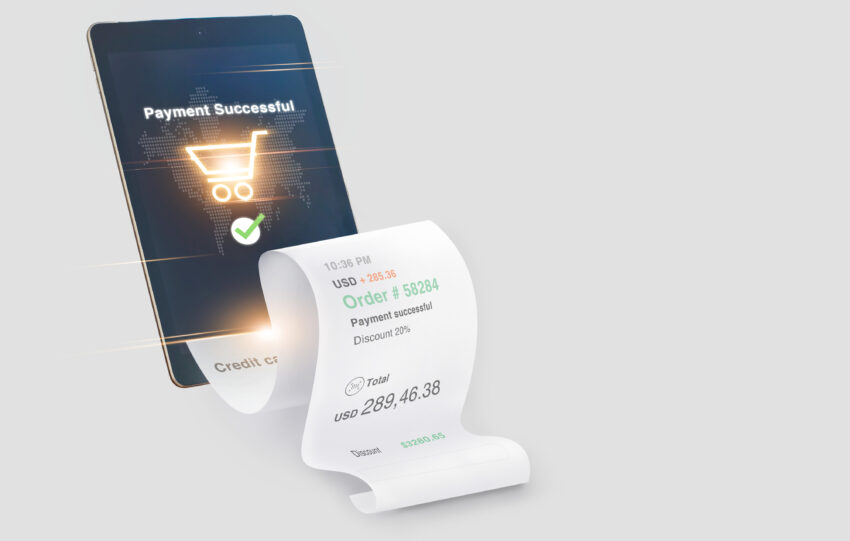Long ago, people travelled long distances and made efforts to meet others, but today, a “Hey Siri, call Erhan” is all that it takes to talk to someone living halfway across the world. Technology, undoubtedly, has made our lives easier. but the future holds much, much more! For years, we’ve used mice and keyboards to command and control the screens and are still doing so. But, imagine scrolling through a webpage by merely staring at it and flipping pages with a gaze. Eye tracking – a sensor technology, makes it doable by understanding the state and activity of the eye. From tracking the point of gaze to the pupil’s reaction to different stimuli, eye tracking converts eye movements into a data stream. Simply put, eye tracking is an ideal spouse that understands your needs by merely looking into your eyes.
Barriers to bridges
Detecting your presence and following what you’re looking at in real time is what eye tracking amazingly does. Comprising cameras, light sources, and computing capabilities, it decodes eye movements and translates them to actionable insights using advanced image processing and machine learning – a crucial technology that understands thinking process and human behavior. From skipping a few sections to re-reading others, humans respond to visual stimuli by paying attention to some things more than others. Anchoring to this, the eye technology not only sees what you see but also observes what you’re ignoring and where you’re not looking at. How your eyes move around a page, or a design reveals a lot about what has captured your attention and what has not – the primary reason for this cutting-edge technology to grow in demand amongst research professionals.
An infrared light source is used to detect the reflections in the pupil and cornea, which is tracked by an infrared camera. Unlike other light sources, the infrared light source gives appropriate accuracy. The collected data is then fed to algorithms and software to calculate the user’s eyes and gaze points. It permits tasks to be easily facilitated, which were once cumbersome and inconceivable – thanks to the advancement in sensor technology. Its applications are limitless, both in research and commercial use.
Screen-based eye trackers (also called desktop, stationary, or remote) and eye tracking glasses (also known as head-mounted) are the two principal types of eye trackers among the many different ones. Screen-based devices require respondents to interact with screen-based content while sitting in front of a monitor while the latter is fitted near the eyes allowing the respondents to move freely. Though both track the eye, the data from their usage can differ.

Neuroarchitecture, or cognitive architecture, is an emerging field where researchers use eye tracking to develop better architectural designs by understanding the respondent’s attention and cognitive reactions to buildings
Recent Developments
Eye movements are powerful indicators of decision-making, preference, and human behavior. Our eyes follow what interests us and our pupils dilate when we’re having an intense emotional response, or we’re intrigued by something that’s in front of us. When researchers observe these patterns across test subjects, they can better predict how they will react as a whole and use the data to improvise the area.
Eye tracking exists in a state of constant evolution and advancements and the current environment is pushing researchers to experiment in new ways. The Global Eye Tracking Market was valued at USD 816.2 million in 2021 and is predicted to reach USD 4.86 billion by 2030 with a CAGR of 21.8% from 2022-2030, according to Grand View Research
Consumer research and advertisement are the growth drivers of the eye tracking market. When applied to UX and user interface, the insight into shopper behavior and buying decisions from eye tracking allows companies to create websites and designs that are more likely to attract attention and conversion. In marketing, this data can be used to optimize the performance of a brand online. Growing adaptations of communicative devices, robotics, contact lenses, and biometrics are expected to propel the growth of the market in the coming years.
Eye tracking technology has changed the way research is being conducted and has unfurled new paths for obtaining data and solving problems. Eye tracking studies that otherwise have been conducted in labs have changed in recent years. One of the notable shifts in its application is for examining sports. Recently, athletes have started using eye tracking to gain a better understanding of their performance where they evaluate visual strategies by tracking eye movements in their training sessions.
Neuroarchitecture, or cognitive architecture, is an emerging field where researchers use eye tracking to develop better architectural designs by understanding the respondent’s attention and cognitive reactions to buildings. The future will see a larger impact on how buildings are designed by empiricism rather than convention. The hunger for scientists and researchers in healthcare to innovate and develop technology to improve the existing ones has been one of the major reasons for the evolution of healthcare. And eye tracking technology has revealed assurance to improve the efficiency of this space. According to researchers, the data gathered from eye tracking can be used to structure better training for the nurses in assessing patients or even designing the clinical space. Similar applications have also been made within the fields of emergency medicine, pediatrics, dermatology, and more. With distracted driving being one of the prominent causes of road incidents, eye tracking technology has come in handy to help track the driver’s state of awareness and direct their attention to where it most matters. Needless to say, it is inevitable for researchers to look at the learning process and teaching materials, and how that information is looked at and use the technology to refine the process in a way that most benefits readers.
Virtually, anything that involves a visual component can potentially become the subject of eye tracking and tapping the power of eyes to see what others see, and how they perceive, can open a whole new world of possibilities and create significant growth opportunities for market players in the coming years.

With distracted driving being one of the prominent causes of road incidents, eye tracking technology has come in handy to help track the driver’s state of awareness and direct their attention to where it most matters
Leaders in the race
Tobii, a global leader in eye tracking based in Sweden, uses attention computing to help its clients capture and understand human attention and intent. Recently, Tobii partnered with HeadVantage to bring eye tracking to sports fans and athletes and also partnered with VR streaming platform LIV to see if eye tracking can bring more realism to even photorealistic avatars. In one of the recent developments, EyeLink 1000, a hardware of SR Research, Canada, tracked the eye movements of dogs while making them watch a video of two people throwing a Frisbee back and forth 10 times with results indicating that dogs can track a moving object. One of its kind, EyeTech, a global leader in Health AI with its revolutionary eye tracking and tunable technology platform launched EyeOn device, an eye tracking tablet with built-in, AI-enabled eye-tracking technology. Eyeware’s real-time 3D gaze coding software GazeSense enables head pose and eye gaze tracking using regular webcams or commercial depth-sensing cameras and its AI-powered webcam app Eyeware Sense allows the cursor to follow the gaze. These are just some of the innovations to emerge. Other significant players in the market like Seeing Machines (Australia), Smart Eye (Sweden) and EyeTracking (US) are emerging as game changers in this quickly evolving industry.

Double-edged sword
Advantageously, eye tracking can tell researchers exactly what the subjects are looking at and how they respond to it in their mind – calling for an elimination of self-reporting and guesswork. The fixation and scan patterns can provide indications of cognition and outline areas of specific interest. On the downside, tracking requires specialized pieces of equipment that are expensive and is not easily available to many startups and small companies. On the other hand, when subjects are aware that their eyes are being tracked, they may behave differently than they would without the tracker—perhaps trying to like something they don’t or avoiding looking at something they otherwise would. This calls for a re-check on the reliability of the data. As eye tracking continues to be in its research and development stage, there remains a multitude of challenges that need to be approached.

In a nutshell
Humans rely on communication to build connections. The alpha of all communication tools is the eye. Eyes send and receive social cues, recognize feelings, and display and understand emotions. Eye contact is key to strong communication.
The methods of technology have improved over the decade. Systems have become smaller and lighter, the software is more flexible, data much better, and insights more actionable. And the constant evolution of eye tracking has made it easier to see the world through the eyes of the consumer. The future will be shaped by the continued application of eye tracking technology in diverse ways and there appears great promise in its inherent potential.
But so far, we have only scraped the surface of what we can accomplish with the help of eye tracking. The progress has been incredible, and no matter the present state, the full impact of eye tracking technology is still ahead of us. It is certainly something we can look forward to.
